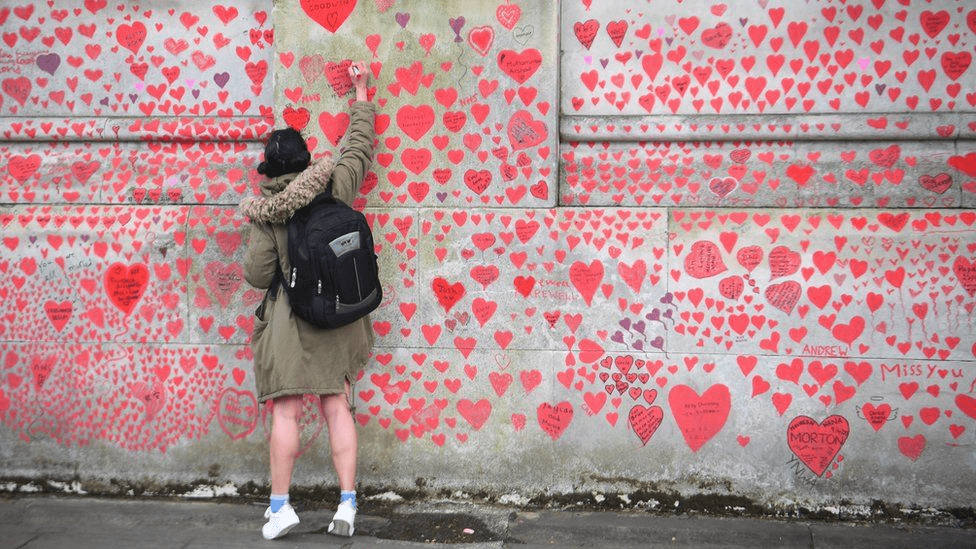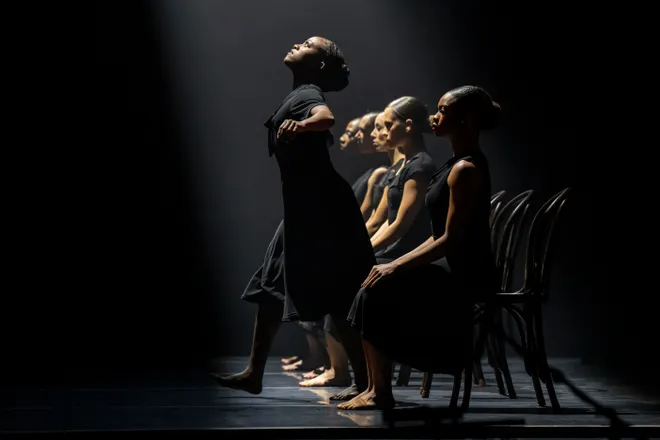Britain, France, Germany, Italy, Portugal, Spain, Belgium and Ottoman Turkey all got in on the act at one time or another.
The Ottomans’ grip on North Africa was, though, already loosening when the Europeans began to expand their empires there.
As they advanced inland, they also learnt how to manage the risk of disease more effectively.
Two episodes in the British experience serve as examples of this.
In 1867, there was an assault launched on the king of Abyssina (now Ethiopia) after he took a number of missionaries hostage.
And in 1874, a local chief named Asantehene Kofi Karikawi was overthrown for trying to get the Fante, a local ethnic group, to obey him instead of the Governor of the Gold Coast (later Ghana), who was Britain’s man in the country.

In both these operations, Britain lost only one or two percent of soldiers to disease.
This was a huge improvement on prior rates of infection and was achieved through stricter medical procedures and the purification of water.
The French, meanwhile, would suffer 50% casualties attributable to disease when they launched a military operation of their own in 1878.
In general, though, Britain won the game of empire not because of more advanced medicine, although that helped, but mostly because of her superior navy.
This allowed the rapid and uncontested transportation of troops to any hotspot around the continent, checkmating rivals from the get-go.
Initially, Britain’s main hub of activity was in the south.
The cape of Africa was just one brick in Britain’s huge trade network.
Greedy it may have been, but, as Lawrence James makes clear in ‘Empires in the Sun: The Struggle for the Mastery of Africa’, there was also a civilising element.
We may laugh now at haughty Europeans, and particularly Brits, planning to save the wretched natives from their superstitions with ‘Christianity, Civilisation and Commerce’, but colonialism was not, unlike the two races, morally black and white.
European influence may have fanned the flames of existing tensions within Africa but, like anywhere, Africa had its own internal problems when Europeans started exploring it.
They certainly were racist to Africans but Africans were also racist to each other, the continent consisting of a plethora of different societies, ethnic, cultural and religious groups
Some of these included internal empires, such as the Zulus, and others coming out of Egypt, officially under the Ottoman umbrella, and Zimbabwe.
Tribes and African societies fought each other as well as Europeans – who also fought one another.
The period is a truly epic tale encompassing a mixture of good and bad players on both sides, as with any epoch in history.
But what was different about the two sides was the enormous technological mismatch, something that allowed the Europeans, when they were bad, to inflict enormous carnage.
For example, in the Anglo-Zulu war of 1879, after an initial setback at Islandlwana, the British dominated the Zulus with their Martini-Henry rifles and Gatling guns.


Zulu Part 1: Encircled By The Buffalo At Isandlwana
A kind of sequel to this terrible affair was the explorer and diamond tycoon Cecil Rhodes’ incursion north into the country now known as Zimbabwe.
In a sort of microcosm for much of what was so horrendous about the European colonisation of Africa, Rhodes convinced the King of the local Ndebele (or Matabele) people, Lobengula, to sign a document.
It was meant to only give Rhodes mineral rights (gold had been discovered), but in actual fact, the paper justified Rhodes’ legal capture of the entire country. It was later named ‘Rhodesia’.
There would, though, be a fight first.
The invaders were outnumbered, but, as Niall Ferguson points out in ‘Empire: How Britain Made the Modern World’, Rhodes’ mercenaries had the trump card: The Maxim gun.
An improvement on the Gatling, the maxim fired 600 rounds a minute, and in this case, slaughtered 1,500 of Lobengula’s tribesmen in a battle that lasted less than a day.
Lawrence James also gives insight into this sorry episode:
“The games fetishism of Victorian public schools produced a breed of fellows who would man outposts or lead columns into the bush with the same jaunty spirit as they faced leg-breaks or tackled a beefy front-row forward.”
Except that this wasn’t nearly as fun for the Matabele:
“These swashbucklers were as addicted to sport as they were to war, and were glad whenever the two could be combined.
“The result was a ghastly incident during the 1893 Ndebele War when several sport-crazed officers treated one skirmish as a big-game hunt, afterwards each adding up his ‘bag’ of dead tribesmen.
“One athletic warrior briefly dodged the fire of four machine-guns and was applauded when he finally fell.
“An attempt to photograph the corpse of ‘so plucky a fellow’ failed, depriving his killers of the big-game hunter’s object of desire, a trophy.”
British involvement hadn’t always been so terrible. On the contrary, she led the way in abolishing slavery, outlawing it at home in 1807, and in her colonies in 1833. (Some historians think there may have been more victims of the Arab slave trade running out of East Africa than Euro-American slavery across the Atlantic).
Indeed, part and parcel of the British imperial project was to go on increasing the share of subjects who worked for wages that were then spent buying goods – the ultimate enlightened-self-interest-economic feedback loop.
That’s why civilising and commercialising the continent went hand in glove.
Trouble was, the last part of the imperial triumvirate, Christianity, seemed to not be working out so well.
Nowadays, Africa is predominantly Muslim in the north and east (including in Somalia) and predominantly Christian in the south and west – a legacy, in the end, of all that European missionary zeal.
But at the time, all the effort seemed to be for nought.
Ferguson humorously points out that after seven years of spreading the Lord’s word, David Livingstone had converted a grand total of… one native.
And even he soon reverted back to polygamy.
This was a motivator for him in deciding to press further inland instead, an effort that eventually turned him into the much celebrated Victorian celebrity explorer.

But although Livingstone found more success elsewhere, the British, and the Europeans, in general, were vexed by the fact that Africans seemed to be converting to Islam in much greater numbers than they were Christianity.
Theories to explain their propensity to resist ‘more enlightened ideas’, soon developed.
One prominent source of these was Joseph-Arthur de Gobineau’s book ‘The Inequality of Human Races’, published in 1855.
It laid out a racial hierarchy within which Africans were at the bottom and Europeans the top, naturally.
Darwin’s ‘On the Origin of Species by Means of Natural Selection’ in 1859 was, of course, a work of true scientific genius, but the ideas were utilised to help bolster racist, and decidedly unscientific, theories, leading to Eugenics and ultimately culminating in Hitler and the Nazis’ racially hostile ideologies.
This, then, also became the explainer for the huge technological disparity.
The world was about 100 years away from Jared Diamond’s ‘Guns, Germs and Steel’, which would postulate that geography was the real driver of this difference.
Farming techniques, he reasons, are more easily spread and adapted across horizontal continents that share a similar climate, like Eurasia, than they are vertical ones, like Africa and America.
That led to writing to keep track of grain stores and in time more advanced societies replete with members educated in different specialisations.
Technology followed, as did the parallel development of resistance to certain diseases.
This developed over millennia spent in close proximity to the animals that carry them.
Unleash these microbes on American Indians and guns on Africans, and the result was always going to be a comparative walk-over in any confrontation between Europeans and anyone else.
Diamond’s theory has been disputed, but for now, it would seem to be a far more plausible explanation for how Europeans so completely dominated Africa than the crackpot notions cooked up at the time.
British ‘superiority’ would certainly come to look like a bit of a joke in South Africa, when the deteriorating political situation led to a military confrontation with fellow Europeans.

The Boers were Dutch, German and French Protestant settlers who lived a rural, egalitarian and conservative life with austere Calvinist beliefs that justified the enslavement of blacks.
This was in direct opposition to the admittedly patronising but far nicer British view that people such as the Xhosa, an indigenous South-African group, were childlike but capable of being moulded into enlightened imperial subjects.
Also, quite apart from the desire to be less beastly to the natives, there were also social divisions between the settlers.
The paternalistic and patrician attitude held by many a Brit caused them to despise the earthy (read ‘uncouth’) Boers, and vice versa.
When war broke out between them in 1899, the imperial British propensity for being supercilious about one’s enemies soon got them into trouble, as James explains:
“Cries of ‘Tally Ho’ echoed across the veldt as Imperial Yeomanry troopers of the Northumberland Hussars set off in pursuit of Boer partisans in 1900. One huntsman in khaki remembered the ‘splendid exhilaration of the charge or the chase with “Brother Boer” as the quary’.”
The British seemed to have forgotten that the Boers beat them in 1881, and on several occasions, in this war, they’d be similarly defeated by the crack-shot farmers wielding German-made Mauser rifles.
Granted, the ‘other team’ now had a more sporting chance, but going into battle must have seemed rather less fun now that the enemy was actually shooting back.
It would take the killing of livestock, burning of 30,000 homesteads and incarceration of mass numbers of Boer civilians – largely women and children – in concentration camps to get things under control.
Under Horatio Herbert Kitchener, who was later made the iconic War Secretary in 1914, the conditions in the camps would make a mockery of British civility.
28,000 Boers died, and 14,000 Africans, with children numbering hugely amongst the victims.

This wasn’t deliberate. In fact, the deaths of another 28,000 proximate British soldiers from disease proves it was down to incompetence, but the episode would still tarnish the British imperial brand.
Interestingly, Kitchener also featured prominently in events on the other end of the continent, though in this case his reputation would be elevated rather than damaged.
Rhodes’ dream had always been to create a pink corridor down Africa through which a Cairo to Cape Town railway would be built.
This was not some idle fancy. The domination of the entire continent by Europeans was well underway and Britain was, well, on track to come out on top in this ‘great game’, as Niall Ferguson explains:
“In the mid-19th Century, apart from a few coastal stations, Africa was the last blank sheet in the imperial world atlas. Then, in the space of just a couple of decades, what had been 10,000 independent African kingdoms were turned into just 40 European colonies… by 1900, Britain owned literally half of Africa.”
As it happens, Ferguson himself is married to the Somali-born public intellectual Ayaan Hirsi Ali.
The last great dash, though, wouldn’t take place until the end of the century:
“In 1882, a momentous decision was taken… in the Foreign Office to occupy Egypt, and so secure the Suez Canal (which had been completed in 1869), and Britain’s lines of communication to her most important possession: India. In North Africa, the issue wasn’t so much economic as strategic.”
But that doesn’t mean there weren’t economic factors. As Lawrence James explains, Egypt’s leader had borrowed to finance development then gone into debt following two bad harvests.NEWS
Comment: Suez – How Britain Became A Second-Tier Power
In a story that echoes our own times, the bankers saw to it that a more pliable leader – the former ruler’s son – imposed austerity measures to better safeguard their investments.
Riots broke out and this gave the British government the excuse they needed to invade and leave a garrison of 5,000 troops guarding the Suez.
Interestingly, the Prime Minister at the time was the usually reluctant imperialist William Gladstone. As it would turn out, one-third of his private investment portfolio consisted of Egyptian stocks.
When Britain invaded Egypt, it shook up any sense of European homeostasis.
The French were enraged that they’d been outfoxed in a country over which they’d previously held sway and by none other their arch-rivals the British.
But it wasn’t just them who got nervous, as Ferguson points out:
“It was the British occupation of Egypt that really triggered the African scramble. As far as the other European powers were concerned, it was imperative to act, and act quickly, before the British gobbled up the entire continent.
“The British themselves were happy to share provided they hung on to the plum properties.
“In other words, the biggest game of monopoly in world history was about to begin, with Africa as the board.”


Was This The Shortest Ever War In Military History?
The board was formerly set in the Act of Berlin, a conference between the great powers of Europe that took place in that city in 1885.
On the plus side, the treaty formerly banned slavery in Africa, but, with no sense of irony, it also simultaneously turned the rest of continent’s peoples into imperial subjects.
Strategic considerations in Egypt aside, al-Jazeera reminds us that overall, the whole thing really was about money:
“Europe… was in the throes of the Industrial Revolution. The advent of the machine was transforming the continent into the workshop of the world, a workshop in need of raw materials.
“Palm and peanut oil would literally grease the engines of the revolution. Modern transportation would need rubber for tyres.
“And Europe’s prosperous middle classes now demanded luxuries from overseas. This was the dawn of industrial-scale production, modern capitalist economies and mass international trade.
“Thanks to a generation of explorers and traders, the great powers knew what riches lay in Africa.”
Belgium would probably be the most egregious exploiter of these riches.
King Leopold II acquired the Congo as his own personal colony and essentially raped it.
Estimates vary, but his agents are thought to have killed between one million and 10 million Congolese.
James describes decapitated heads stuck on spikes (referring to Joseph Conrad’s ‘Heart of Darkness’), and brutal rubber quotas for workers – any native sent into the forest in the morning was required to come out at night with eight kilos of sap, or else he’d have his hands and feet cut off.
For her part, Britain, with Kitchener in the lead, would also embark on a killing spree, albeit a considerably smaller one with some motivating factors.
In acquiring Egypt she’d also taken on her crumbling dependency next door, the Sudan, just as uprisings were beginning.
In 1884, the celebrity military commander General Gordon was sent to oversee the evacuation of British soldiers and civilians in the city of Khartoum.
He enabled many to escape but stayed behind and was surrounded by the army of Muhammad Ahmad, the self-proclaimed Mahdi, or holy messenger of Allah.
The episode dragged on for months, with Queen Victoria lobbying the Prime Minister, who’d returned to his normal imperial reticence, to send help.
Gladstone was finally moved to act, but the troops he sent didn’t get to Gordon in time.
The defences were broken and he was killed, his last moments depicted, probably apocryphally, as those of a defiant Christian martyr facing down his Muslim enemies.

Revenge was now most definitely on the menu, but only after a delay.
Russia invaded Afghanistan and troops were diverted to bolster India first.
Then, in 1897, Kitchener led a force south into the Sudan. They advanced a mile-and-a-half a day, laying out train tracks behind them.
Materials followed and in 1898 they had a showdown with the army of Abdullah ah-Taashi, who’d succeeded the Mahdi, Muhammad Ahmad after he died of Typhus.
The Battle of Omdurman would be a total slaughter, with Taashi’s men charging recklessly at rifle, machine gun and artillery fire, believing their faith would shield them from the bullets.
Concurrently, the British had also acquired Somaliland, now in northwestern Somalia.
There were no resources there but the livestock trade became an important aspect of the food supply for their men just over the water at the port city of Aden, in Yemen.
Meanwhile, the Italians got their claws into the rest of the country, which would become Italian Somalia/Somaliland.
They attempted to take Abyssinia (Ethiopia) as well but were repulsed, and only succeeded under Mussolini in the 1930s.
With Britain also taking possession of German East Africa after the First World War, her goal of a continuous corridor from north to south had now been realised.
No doubt the British would have liked to remain sitting pretty, but peace and quiet at the top of the imperial pyramid were in short supply.
A figure known as the ‘Mad Mullah’, Sayyid Mohammed Abdullah Hassan, would proclaim a Dervish state in Somalia and lead his Dervish army against the British.
This uprising continued through the First World War and, upon hearing of their disapproval of him receiving aid from the Turks, he wrote a letter to the British government.
In it, he taunts them about their present, and historical, reliance on multiple allies:
“You know, and I know, what the Turks have done to you and what the Germans have done to you, you of the British Government.
“The suggestion is that I was weak and I had to look outside for friends; and if, indeed, this were true and I had to look for assistance, it is only because of the British, and the trouble you have given me.”
Then he got really nasty:
“It is you who have joined with all the people of the world, with harlots, with wastrels, and with slaves, because you are so weak.
“But if you were strong you would have stood by yourself as we do, independent and free.
“It is a sign of your weakness, this alliance of yours with Somalis, menials and Arabs, and Sudanese, and Kaffirs, and Perverts, and Yemenis, and Nubians, and Indians, and Baluchis, and French, and Russians, and Americans, and Italians and Serbians and Portuguese, and Japanese, and Greeks and cannibals and Sikhs and Banyans, and Moors, and Afghans, and Egyptians.
“They are strong, and it is because of your weakness, that you have to solicit as does a prostitute.”
Well, that told us. It’s not entirely clear where in the imperial or First World War alliance systems fit harlots, wastrels, slaves, menials, Kaffirs (infidels), cannibals and perverts. Perhaps this is why he was known as ‘mad’.
In the end, the Mullah would defy the British for 20 years, finally being brought to heel in 1920 by a combined ground and air assault. He would die later that year of influenza.

With the Dervishes gone, Britain could finally enjoy her place in the imperial sun.
The trouble was, the sun always sets, and the entire imperial project would soon be gone.
Once again, it would come down to money, as Richard Dowden, Director of the Royal African Society, outlines:
“Britain was bankrupt after the Second World War. It simply couldn’t afford to go on running (its colonies).
“My grandfather was working in the Gold Coast and was sending rice and ground nuts back to his four sons in Britain.
“And they write pathetically grateful letters: ‘Thank you for sending us this food’. And I think that the irony of that is amazing – Africa feeding very hungry Britain.”
One could argue that the end of imperialism in Africa, at least, overt imperialism, wasn’t entirely down to self-interest.
Word War Two shook up the international order and legitimated calls for self-determination – it would have been a bit hypocritical not to acknowledge the right of people to govern themselves after having just defeated fascism.
So following the war, there was a period of preparation for self-rule before the nations of Africa were formerly emancipated from their imperial shells.
1960 saw 17 of them gain independence and Somalia, a fusion of British and Italian Somaliland, numbered amongst them.
The trouble, as mentioned, is that the nation states that were created and then made independent didn’t exactly contour to the prior ethnic and regional groups.
And again, Dowden, speaking to al-Jazeera, reminds us, that in many ways colonial rule exacerbated and heightened ethnic differences:
“One of the problems with independence when it came was that the colonial powers hadn’t ruled (for example) Nigeria (and) Nigerians as Nigerians, they’d ruled them as Hosa people or Yoruba people or Edo people; they hadn’t ruled Kenyans as Kenyans, but as Kikuyu or Luo people and suddenly they all had to be Kenyans, or Nigerians.
“And very quickly the politicians, naturally, looked to their own people for their political power base and… politics became very ethnicised.”
In the case of Somalia, the political problems that came after independence were always going to come down to the dual forces of clannism within Somalia, and the drive to unite all the Somali people who lived outside of it.
There was, though, a couple of points in its history when it looked like these two issues might both be resolved in one go.
To understand why one must appreciate just how much nomadism plays a role in Somali culture.
This is deeply rooted in the livestock sector, with sheep and camels still being a huge part of the economy.
Camels, in particular, have a special place in Somali hearts, being their traditional mode of transport, a source of food (milk and meat) and of income.
The economy is also sustained by agricultural goods – frankincense and myrrh, millet, maize, bananas, sorghum and other crops.
Farmers, though, are considered inferior by the Somali nomads.
Nomadism is so much of a bedrock in Somali culture that even urban dwellers maintain familial and financial links to the herders and livestock sector.
In fact, many of them send their sons off to live for a while with nomads, something that acts as a sort of rite of passage.
The author glimpsed a similar romanticism around the life of the Bedouin in Saudi Arabia, the desert peoples who gave rise to Saudi society, being invited out to dine by campfire in the desert by university students whilst teaching there.
It was this appreciation of nomadism that almost played a role in uniting all the Somali groups within the region.
To begin with, the Italians tried to unite eastern Ethiopia, Italian Somalia and Somaliland in the 1930s.
They were beaten back by the British, who went a step further and added the Somali populated portion of Kenya that they controlled to the package.
All that was missing now was Djibouti.
Ernest Bevin, who’d been the Trade Union leader in Churchill’s cabinet, proposed the following in 1946:
“(All Somali areas) should be lumped together as a trust territory so that the nomads should lead their frugal existence with the least possible hindrance and there might be a real chance of a decent life as understood in that territory… All I want to do is to give these poor nomads a chance to live… It is to nobody’s interest to stop the poor people and cattle there getting a decent living.”
But the ‘Bevin Plan’ was opposed by the US, France and Italy, the last of whom got to keep her portion of Somalia in 1950 and was to administer it for 10 years, at which point it would be set free.

This meant the British giving up Ogaden, the Somali portion of Ethiopia, in 1948.
The coveted grazing lands called the Haud and Reserved Area was also given over to Ethiopia in the 1950s.
Many Somalis still hold Britain responsible for all of this.
War has continued to be waged in the form of constant rebellion in eastern Ethiopia ever since the conflict being exacerbated by US support for Ethiopia against targets in this area in the ‘War on Terror’.
The first Prime Minister of the country after it got its independence in 1960, Abdirashid Ali Shermarke, wrote of the Somali people being so fragmented:
“Our misfortune is that our neighbouring countries, with whom, like the rest of Africa, we seek to promote constructive and harmonious relations, are not our neighbours.
“Our neighbours are our Somali kinsmen whose citizenship has been falsified by indiscriminate boundary ‘arrangements’.
“They have to move across artificial frontiers to their pastoral lands. They occupy the same terrain and pursue the same pastoral economy as ourselves.
“We speak the same language. We share the same creed, the same culture and the same traditions. How can we regard our brothers as foreigners?”
Britain did consider allowing the north-western portion of Kenya containing some of the ‘brother’ Somalis to be incorporated into Somalia.
But even though the majority of those in the region in question wanted this, the majority of non-Somalis in Kenya, and elsewhere on the continent, did not – fearing it would spark other secessionist movements later on.
Lord Renell Rodd, a British official in the Horn of Africa, foresaw many problems as a result of this:
“If we had been interested enough… (and if the world had been sensible enough) all the Somalis… might have remained under our administration.
“But the world was not sensible enough, and we were not interested enough, and so the only part of Africa which is radically homogeneous has been split into such parts as made Caesar’s Gaul the problem and cockpit of Europe for the last two thousand years.
“And Somaliland will probably become a cockpit of East Africa.”
Despite this, things were looking up right after independence in 1960, with the competition inherent in democracy suiting the Somali oral tradition, translating it easily into parliamentary debate.
But when President Sharmarke was killed by a police officer in a clan dispute, the head of the army, Siad Barre, used the temporary political vacuum as an opportunity, seizing control and imprisoning political parties.
He introduced ‘scientific socialism’ and tried to eradicate the clan culture, seeing it as anathema to the project for a united nation.
The slogan was ‘Tribalism divides, Socialism unites’. Clan symbols were burned and buried, greetings referring to kinship stamped out and replaced instead with jaale, meaning ‘comrade’ or ‘friend’.
Further efforts to unite the nation were also made on the language front, with a written form of Somali being introduced for the first time in 1972. This was taught along with basic hygiene and the precepts of socialism to everyone, including the rural nomads.
There was to be an exchange, urban elites sharing ‘the fruits of the revolution’ with nomads who would repay them with hospitality.

EXCLUSIVE: What Does The Future Hold For Somalia After British Troops Leave?
Unfortunately, ‘scientific socialism’ seemed to not have the cure for the drought that hit from 1974 to 1975.
The people were distracted from their hardships instead, perhaps deliberately, by a war in 1977 to take the Ogaden from the Ethiopians.
The trouble was, Ethiopia by this point was Marxist too, and it had also experienced a revolution, or overthrowing of the prior leader, Emperor Haile Selassie.
The new leader, Haile Mariam, gained Soviet military support and Somalia was defeated in 1978. This, and the drought, fuelled a coup attempt against Barre that did not succeed.
There was also a cultural backlash in the form of a resurgent clannism.
One huge epicentre for this was in the city of Hargeisa in former British Somaliland, which Barre proceeded to bomb.
He did this so viciously that, in the aftermath of the attack, the city was re-branded the ‘Dresden of Africa’, with hordes of refugees left streaming over the border into Ethiopia.
This, in turn, provoked a further political backlash, with three groups – the SSDF (Somali Salvation Democratic Front), the SPM (Somali Patriotic Movement) and the USC (United Somali Congress) – coalescing around their mutual opposition to the increasingly marginalised ‘Mayor of Mogadishu’ (Barre was referred to this way because his power, by this point, didn’t extend much beyond the capital city).
USC fighters continued to press even on the capital, and Barre was ejected in January 1991.
But in this power vacuum, without a clear path to alternative national leadership, infighting soon broke out between competing clans within the USC.
One British eyewitness described the absolute carnage this conflict descended into, hospitals receiving 50 or 60 wounded a day, and doctors conducting 10 or 15 daily amputations; the dead – mostly women, old men and children – were buried where they lay and hands left sticking up out of the sand was a common sight.
Those that were left unburied were typically eaten by dogs.
It was now the age of the warlords, local chiefs with the backing of militias or businessmen.
Kalashnikov-wielding men and teenaged boys became ubiquitous and ‘technicals’, pickup trucks with machine-guns or anti-aircraft guns mounted on the back, were a commonly seen careering around city streets.
There was constant shooting and shelling, there was raping and theft, there were thousands upon thousands of casualties – Mogadishu had become Beirut.
Famine soon followed, and it was this appalling set of circumstances the spawned the UN, and US, military operations that would end in the Black Hawk Down fiasco and the pulling out of UN troops in 1995.

The situation, of course, has remained relatively unstable ever since, with piracy on the coast and terrorism a frequent problem in the interior.
Harper, though, breaks these problems down and reminds us that the country’s prospects need not seem so bleak.
Regarding the piracy issue, it is important to understand what many there say about it:
“We are fully aware of the consequences (of piracy) but the world needs to understand the problems we face in Somalia. There has been no peace for eighteen years. There is no life here. The last resource Somalis have in the sea, but foreign trawlers have plundered all our fish. This is what drove us to piracy. We have to engage in piracy in order to survive.”
The term ‘Coast Guards’ is what many there call themselves, though Harper is blunt about the fact that, although resource plunder by outsiders and war have motivated some to go into piracy, many that do really are just criminals.
This is evidenced, she says, by the fact that it isn’t the international fishing vessels that are attacked, but instead the cargo ships that present a greater economic prize.
In terms of terrorism, here too Harper admits it is a widespread problem but in this case, she argues that it is an issue the US has inadvertently exacerbated.
To begin with, it is important to understand that when al-Qaeda tried to infiltrate the country, it’s brand of Islam wasn’t welcome, and it too ran into local clannish resistance.
It was the removal of the UIC, Union of Islamic Courts, from the south by the US-backed Ethiopian incursion in 2006 that helped fan the flames of extremism.
The UIC was, to be sure, austere and harsh, but it was not a uniformly radical group.
On the contrary, it was a loose confederation of different Islamist authorities. One associated element was a militia, al-Shabaab.
In the power vacuum left by the removal of the UIC, it was al-Shabaab that gained a foothold in much of the south and in large parts of Mogadishu.
Incidentally, and ironically, Sheikh Sharif Sheikh Ahmed, a former leader of the UIC, was endorsed internationally as a leader of one of Somalia’s attempted transitional governments in 2009
But by that point he’d lost his ‘political capital’, being seen as a sell out to the west.
He probably could have been more effective, Harper argues, if the US had realised he was someone they could have worked with before the UIC was removed and al-Shabaab inadvertently allowed in.
That, she points out, has been the pattern since 1995. A series of transitional governments are set up outside the country and attempt to impose centralised order, something that often ends up being futile.
Instead, Harper believes the solution to Somalia’s problems lies in the regional solutions that the people have found for themselves.
She argues repeatedly that Somali innovation is consistently underestimated.

In a sense, this was even evident militarily during the Day of the Rangers.
In the documentary ‘Seconds from Disaster: Black Hawk Down’, it is the assessment of SAS veteran Robin Horsfall, who analyses the mission on the program, that the US operators got complacent.
They used the same mission template repeatedly, operating in much the same way each time.
The Somalis soon learnt to anticipate their next move.
Not only that, unbeknownst to the Americans, the Somalis had learnt to shoot down helicopters by firing at the rear rotor blade with an RPG.
Caught off guard, and no doubt believing the downing of the first Black Hawk helicopter was a fluke, everyone on the ground rushed to defend it, without leaving a pool of reserves.
Thus, when the second helicopter was brought down, there was no one available to guard and defend the crash site.
Likewise, in peace as in war, Harper says that Somalis have shown tremendous determination and have come up with creative solutions.
In contrast with Somalia’s reputation as a failed state, there has been relative peace and stability in the regional and semi-autonomous Somaliland and Puntland (named after an ancient trading partner of Egypt believed to be based around the horn of Africa).
Looking at the reasons for Somaliland’s success, Harper argues that the lack of a central government has actually been a good thing.
She doesn’t mean this from an ideologically libertarian perspective, but rather, she attributes it to the ability of the Somalis to fall back on their alternative society – the nomadic and clan-based sub-society that has always been there.
This has allowed them to develop sophisticated money lending, internet and mobile phone systems and, because of the far-reaching Somalia Diaspora, this network extends globally.
Likewise, politically, Somaliland fused its traditions with outside democratic ideas.
It started with clans and respect for elders, moved into inter-clan conferences and out of these came a hybrid system that combined the traditional modes of social organisation with Western-style political organisations.
In something akin to Britain’s Houses of Commons and Lords, but with American labels, Somaliland’s Senate houses the clan elders whilst its House of Representatives has elected politicians.
This system was used to smooth the transition into presidential politics and then, after 12 years of the system running without parties, a limited number were introduced, the constitution forbidding them from being run along clan lines.
Limiting the number of parties to three has helped to ensure they remain larger than any particular clan.
She does note that simply replicating Somaliland’s success elsewhere won’t work, as each region is subtly different.
But her overall argument is clear – the outside world should not throw the baby out with the bathwater when trying to help Somalia rebuild itself. Imposing distant central government that makes no use of locally developed solutions to the country’s many problems is myopic.
There have been suggestions, from former foreign minister Ismail Mohamed Huure, that Somaliland’s capital, Hargeisa, replace Mogadishu as the capital of the whole nation, given its comparative peace and security.

Pitching this, and pragmatically knocking aside the notion of a ‘Greater Somalia’, Huure said:
“Somaliland is now in a position to govern the whole of Somalia. Somaliland is secure at the moment, but if the situation in Mogadishu continues, sooner or later, the violence is going to hit Hargeisa.
“You cannot have peace and stability in one area and not the other. Somalis are either going to suffer together or prosper together
“We are one nation; clans do not make nations.
“The Somali nation in the Horn of Africa is a wholly unified country. We are not looking to re-create the Somali nation from the five points of the star; that is a dream in the sky. We must look at the facts on the ground, at the two areas where you have a 100% Somali population.
“These two regions will share a destiny together, whether it is peaceful or not.”
One can only hope that Huure’s pragmatism wins the day and that Somalis can continue to build the local and national foundations that will one day bring them lasting peace and stability.
Somalia in recent years
Today, the Federal Government of Somalia acts as the central government, rebuilding the capital and improving control and order whilst the informal economy runs in the background. This is, of course, an ongoing process.
Earlier this year, Al-Jazeera’s Inside Story (Why does Somalia matter?) summed up the rocky road the country has gone down in recent decades to get to this point:
“Long-time leader Mohamed Siad Barre was overthrown in 1991 which led to a decade-long civil war between clan warlords.
“It took 13 attempts before Somalia inaugurated a stable transitional government in Kenya (in 2004). But as it tried to end the civil war, al-Shabaab began its violent campaign against the government (in 2009) making war and famine worse.
“Surrounding nations were compelled to join the fight. Kenyan troops entered Somalia for the first time in 2011. Ethiopian troops had already been fighting there for around 15 years.
“In 2012, Somalia’s first formal parliament and president were sworn in. For the first time in 20 years, there was the possibility of having a central government.
“Al-Shabaab began attacking surrounding nations to discourage their interventions. In September, 2013, gunman killed 67 people in the Westgate Shopping Mall in Nairobi.
“And two years later, 148 mainly Christian students were shot and killed in Kenya’s Garissa University College.
“Threats from al-Shabaab continue to plague Somalia today, hindering its chances for political stability.”
The current president of Somalia, Mohamed Abdullahi Mohamed (‘Farmajo’), was elected earlier this year. He said:
“The position of presidents is not easy and there is a daunting task ahead of me. I know that, but I will work hard to make sure to realise your dreams.”
Since then, Mary Harper has reported on Somalia’s ongoing and potential future problems. One of them, she says, is the possibility that as the different federal states develop, Balkanisation may be one result:
“The attitude of people in (the recently created) South West State shows how much of a gamble the federal system is.
“We have always been marginalised and looked down on by other Somalis,” says a farmer, Fatima Issa.
“We do not want the federal troops here. They don’t hunt down al-Shabab the way our local militias do. We should push for more autonomy, maybe even break away and declare independence like Somaliland did in 1991”.”
A breakdown in Somali national cohesion could also be encouraged by the signing of bilateral agreements between individual federal states and foreign powers. The UAE, for instance, has arranged to build a military base in Somaliland, and has given military equipment to Jubaland State in the south.
Harper says that Abukar Arman, the country’s former US special envoy, has described the London Somalia Conference, which took place in May of this year, as a “predatory carnival” where countries outside Somalia slice it up to benefit themselves.
The title of another one of Harper’s articles about this issue was ‘Target Somalia: The new scramble for Africa?’
Al Jazeera reports that the issue of the UAE deal in Somaliland will have to be dealt with by the next administration. The region has just had an election of its own, which was delayed because of draught, funding issues and political disagreements.
Given the relative success of Somaliland, the Forces Network contacted Harper to ask if positive aspects of its political development in recent years could be utilised on a national level. She responded:
“Although the situation in the self-declared republic of Somaliland is very different from that of the rest of Somalia, lessons could be learned from Somaliland’s recent electoral process. Unlike Somalia, where the process to select a new president was in some ways ‘hijacked’ by the United Nations and other foreign powers, Somaliland has to a large extent invented and applied its own system, which combines traditional clan politics with modern Western democracy. Perhaps the most important lesson for the rest of Somalia and those trying to fix it is that non-interference, or at least a degree of distance, could be beneficial.”


































